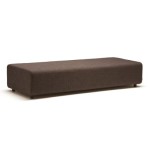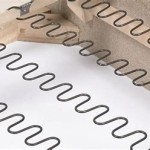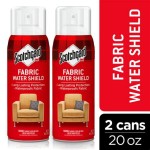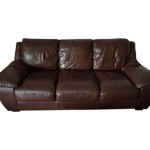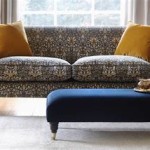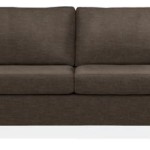```html
Early Settler Sofas: A Guide to Style, Quality, and Design
Early Settler is a well-known Australian furniture retailer offering a wide range of products, including sofas. These sofas are often characterized by their focus on traditional and classic aesthetics, incorporating elements that evoke a sense of heritage and comfort. Understanding the specific features, materials, and stylistic choices prevalent in Early Settler sofas is crucial for potential buyers seeking to furnish their homes with pieces that align with a particular design vision.
The brand's sofas often feature designs drawing inspiration from various historical periods, including the Edwardian, Victorian, and Federation eras. These influences are typically manifested through details like rolled arms, button-tufted upholstery, and timber frames with intricate carvings. The overall goal appears to be the creation of furniture that feels both familiar and refined, contributing to a warm and inviting atmosphere in a living space.
Key Point 1: Distinctive Design Elements
Early Settler sofas are distinguished by several recurring design elements that contribute to their overall aesthetic. These elements are often carefully considered to create a cohesive and recognizable brand identity. The prevalence of certain features influences the perceived value and suitability of these sofas for particular interior design styles.
Rolled Arms: Many Early Settler sofas feature rolled arms. This classic design element adds a touch of elegance and formality. The degree of the roll can vary, ranging from a subtle curve to a more pronounced and voluminous shape. The choice of rolled arm design often depends on the specific model and the intended overall style. Sofas with tightly rolled arms often appear more formal, while those with looser, more relaxed rolls may be better suited for casual settings.
Button-Tufted Upholstery: Button-tufting is another common design element found in Early Settler sofas. This technique involves securing fabric to the frame with buttons, creating a textured and visually appealing surface. Button-tufting is particularly popular in Chesterfield-style sofas, which are frequently offered by Early Settler. The density and pattern of the button-tufting can significantly impact the sofa's overall appearance, influencing its perceived level of formality and sophistication.
Timber Frames and Detailing: The visible timber components of Early Settler sofas often receive special attention. Timber frames, legs, and other structural elements may feature intricate carvings, moldings, or other decorative details. The type of wood used, the finish applied, and the level of ornamentation all contribute to the sofa's overall aesthetic. Darker wood finishes typically convey a sense of traditional elegance, while lighter finishes may be used to create a more relaxed and contemporary look.
Fabric Choices: The upholstery fabric plays a crucial role in defining the style and character of an Early Settler sofa. Common fabric choices include linen, velvet, and leather, each offering a distinct texture and appearance. Linen provides a natural and breathable feel, while velvet offers a luxurious and opulent aesthetic. Leather is known for its durability and timeless appeal. The choice of fabric is often dictated by the desired style and level of practicality.
Nailhead Trim: Nailhead trim is a decorative element frequently used to accentuate the lines and curves of Early Settler sofas. This involves attaching small metal nails or studs along the edges of the upholstery, creating a subtle but visually appealing detail. Nailhead trim can be used to highlight the shape of the arms, back, or base of the sofa, adding a touch of sophistication and refinement.
Key Point 2: Material Quality and Construction
The quality of materials and construction techniques employed in Early Settler sofas directly impacts their durability, comfort, and longevity. Understanding the specifics of the sofa's construction can help buyers make informed decisions about their purchase, ensuring they are investing in a product that will withstand regular use and maintain its appearance over time.
Frame Construction: A solid and well-constructed frame is essential for the stability and durability of any sofa. Early Settler sofas typically feature frames made from hardwood or engineered wood. Hardwood frames are generally considered to be more durable and resistant to warping or cracking, while engineered wood offers a more cost-effective option. The frame should be properly joined and reinforced to ensure long-lasting support.
Suspension System: The suspension system provides support and cushioning for the seats and back cushions. Common suspension systems include sinuous springs, pocket springs, and webbing. Sinuous springs offer a good balance of support and comfort, while pocket springs provide individual support for each seat. Webbing is a more traditional and cost-effective option. The choice of suspension system can significantly impact the sofa's overall comfort and longevity.
Cushion Fill: The type of cushion fill used in Early Settler sofas affects their comfort and resilience. Common fill materials include foam, feathers, and fiberfill. Foam provides firm support and retains its shape well, while feathers offer a plush and luxurious feel. Fiberfill is a more affordable option that provides a good balance of comfort and support. The density and composition of the cushion fill will influence its firmness and ability to withstand compression over time.
Upholstery Durability: The durability of the upholstery fabric is crucial for the sofa's long-term appearance and resistance to wear and tear. Early Settler typically provides information regarding the fabric's composition and rub count, which indicates its resistance to abrasion. Higher rub counts generally indicate a more durable fabric. The choice of upholstery fabric should be based on the intended use of the sofa and the level of traffic it will experience.
Stitching and Seam Construction: Proper stitching and seam construction are essential for preventing fabric from tearing or unraveling. Early Settler sofas should feature reinforced seams and durable stitching to ensure long-lasting durability. The quality of the stitching can be assessed by examining the tightness and evenness of the stitches.
Key Point 3: Style Versatility and Integration into Interior Design
While Early Settler sofas often lean towards traditional and classic styles, they can be incorporated into a variety of interior design schemes. Understanding how to effectively integrate these sofas into different settings is essential for achieving a cohesive and visually appealing living space. The key is to balance the sofa's inherent style with the surrounding elements and overall design aesthetic.
Complementing Traditional Settings: Early Settler sofas are naturally well-suited for traditional interior design schemes. When paired with other classic furniture pieces, such as antique tables, ornate mirrors, and patterned rugs, these sofas can create a warm and inviting atmosphere reminiscent of a bygone era. The key is to maintain a sense of balance and avoid creating a space that feels overly formal or stuffy. Adding touches of greenery and personal accessories can help to soften the traditional aesthetic and create a more lived-in feel.
Contrasting with Modern Spaces: Early Settler sofas can also be used to create an interesting juxtaposition in modern or contemporary spaces. By placing a traditional sofa in a room with clean lines, minimalist furniture, and neutral color palettes, one can create a visually striking contrast. This approach can add character and depth to a modern space, preventing it from feeling sterile or impersonal. The contrast highlights the features of the sofa bringing it to the spotlight.
Eclectic Design Approaches: The blend of vintage and modern elements in Early Settler sofas often aligns well with eclectic design principles. Eclectic design embraces a mix of styles, textures, and colors, creating a unique and personalized living space. Early Settler sofas can serve as a focal point in an eclectic room, surrounded by an array of diverse furniture pieces, artwork, and accessories. The key to successful eclectic design is to maintain a sense of cohesion and avoid creating a space that feels cluttered or chaotic. A consistent color palette or a unifying theme can help to tie the elements together.
Color Palette Considerations: The color of the sofa should be carefully considered in relation to the overall color palette of the room. Neutral-colored sofas, such as beige, gray, or cream, offer versatility and can be easily integrated into a variety of color schemes. Boldly colored sofas can add a pop of personality to a room, but should be carefully coordinated with the surrounding elements. Consider using accent pillows, throws, and artwork to tie the sofa's color into the overall design.
Accessorizing and Styling: The way a sofa is accessorized can significantly impact its overall appearance and its integration into the room. Adding throw pillows, blankets, and decorative items can personalize the sofa and enhance its comfort. The choice of accessories should complement the sofa's style and the overall design aesthetic of the room. Consider using textures and patterns to add visual interest and create a more inviting atmosphere.
```
Slouch Sofa In Velvet Earthy Tones Early Settler S Home Life

Which Armchair Pairs With The Slouch Early Settler S Home Life

Versatile Sofa Beds Single 2 Seaters For Modern Homes Early Settler Au

How To Choose The Right Sofa For Your Space Early Settler S Home Life
Early Settler Couches Sofas Mystyle Select Collections Au

Milo And Mitzy My Living Room With Early Settler

How To Choose The Right Sofa For Your Space Early Settler S Home Life
Slouch 2 Seater Boucle Sofa Natural Custom C 046 Early Settler Au

Milo And Mitzy My Living Room With Early Settler

Sink Into A Sumptuous Velvet Sofa Early Settler S Home Life

